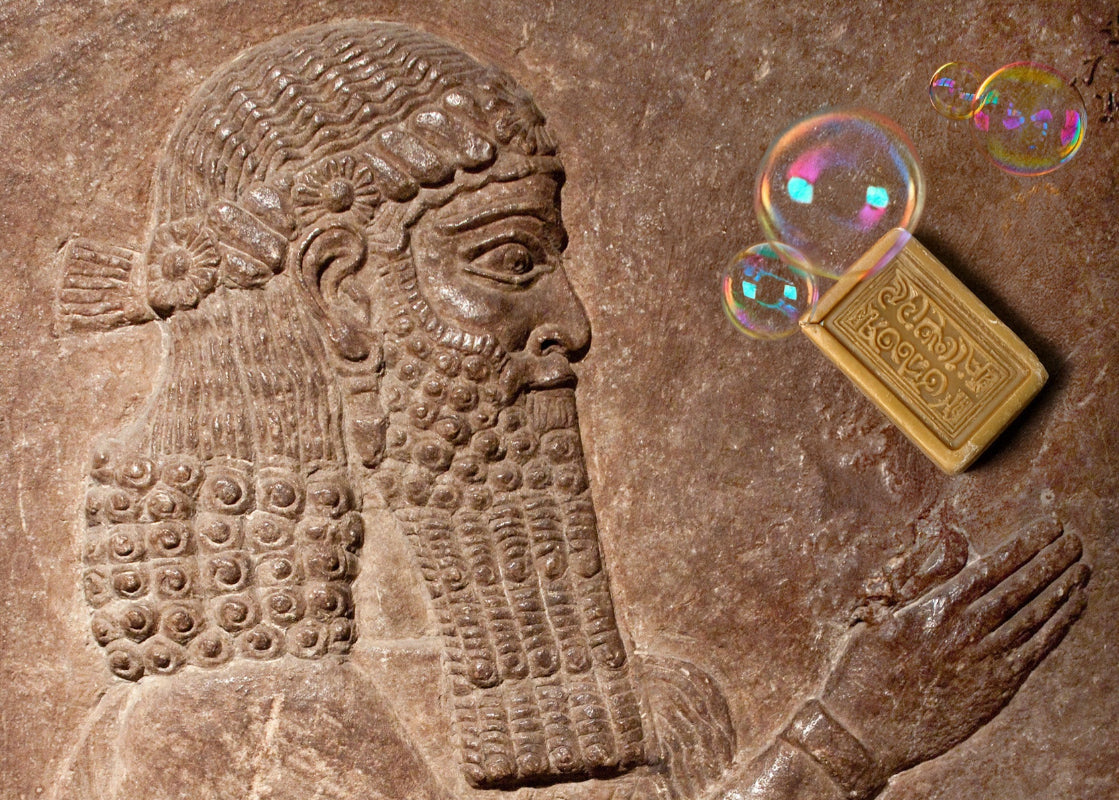Ancient Soap Making Secrets: Lost Techniques from Early Civilizations

Ancient Soap Making: Lost Techniques Preserved in Seattle’s Artisanal Tradition
The art of soap making represents one of humanity’s oldest chemical technologies, with documented evidence dating back to ancient Mesopotamian civilizations over 4,800 years ago. From the clay tablets of Babylon to the papyri of Egypt and the innovative formulations of Sumerian craftspeople, soap making evolved through millennia as both practical necessity and cultural achievement. At Seattle Sundries, we honor this profound historical legacy by preserving traditional techniques while incorporating modern understanding of these ancient chemical principles. Our workshop stands as a contemporary link in a chain of craftsmanship that connects the shores of Puget Sound to the banks of the Tigris and Euphrates, where this remarkable journey began. This exploration of soap making’s historical evolution reveals how fundamental practices established thousands of years ago continue to influence our approach to creating effective, natural cleansing products today.
The Dawn of Cleanliness: First Soaps from Babylon, Egypt, and Sumer
The story of soap begins long before written history, but archaeological evidence gives us glimpses into humanity’s first cleansing creations. The earliest documented soap-making appears on Babylonian clay tablets dating back to approximately 2800 BCE. These ancient texts describe mixtures of water, alkali (from wood ash), and cassia oil—a formula surprisingly similar to what we use in our workshop today [1].
In ancient Egypt around 1500 BCE, the Ebers Papyrus described medicinal concoctions combining animal and vegetable oils with alkaline salts. These weren’t just for cleaning—they were healing remedies too! The Egyptians used these soap-like substances for treating skin diseases and as part of their famous beauty regimens [2].
When I’m mixing oils in our Seattle workshop, I often think about those ancient Egyptian soap makers and how they’d recognize the basic chemistry we’re still using thousands of years later. The connection across time feels almost magical!
The Sumerians, meanwhile, created their own version by boiling fats with ashes. Archaeological evidence suggests they used these mixtures primarily for textile cleaning rather than personal hygiene [3]. At Seattle Sundries, we honor this textile-cleaning heritage with our stain stick soaps—though I promise they smell much better than their Sumerian ancestors! 😉
Roman and Greek Contributions: From Myth to Manufacturing
The Fascinating History of Soap Making Continues with Roman Innovations
The Romans advanced soap-making significantly, though their origin story is more myth than reality. Legend claims soap was discovered at Mount Sapo, where animal sacrifices occurred. Supposedly, rain washed a mixture of animal fat and wood ash into the Tiber River, where women noticed it helped clean their laundry [4]. While historians doubt this tale, it’s a reminder that sometimes the best discoveries happen by accident—just like some of our favorite Seattle Sundries formulations!
Roman soap production became industrialized in fulleries (fullonica), where workers used mixtures of water, urine, and fuller’s earth to clean wool and other textiles. The ruins of Pompeii contain well-preserved fulleries, showing large vats where these cleaning processes took place [5].
The Greeks approached soap differently, focusing on its medicinal properties. The physician Galen (129-210 CE) documented soap recipes for treating skin diseases and removing impurities from the body [6]. This therapeutic approach to soap-making resonates deeply with our philosophy at Seattle Sundries, where we craft soaps not just to clean but to nourish and heal.

Golden Innovations: Islamic Contributions to Soap-Making
Advanced Soap Making Techniques Emerged During the Islamic Golden Age
The Islamic Golden Age (8th-14th centuries) revolutionized soap-making techniques. Persian physician Al-Razi (854-925 CE) documented detailed soap recipes and manufacturing methods in his “Book of Secrets,” describing processes remarkably similar to modern cold-process soap-making—the very method we use at Seattle Sundries [7].
This era saw the development of hard, dry soaps that could be stored and transported easily. The famous Aleppo soap, made with olive oil and laurel oil, originated during this period and continues to inspire our olive oil-based formulations today [8].
In the city of Nablus (modern-day Palestine), artisans perfected Nabulsi soap using olive oil, water, and an alkaline sodium compound. The traditional method involved:
-
Mixing olive oil with locally sourced alkali (qelw)
-
Boiling the mixture in large copper vats
-
Pouring it onto stone floors to cool and harden
-
Cutting into blocks and stamping with distinctive seals [9]
When I’m pouring our soap batches into molds, I often think about those Nabulsi soap makers and how they’d recognize our process, despite the centuries between us.
Medieval European Developments: From Luxury to Guild Craft
Traditional Soap Making Became a Guarded Craft in Medieval Europe
By the 7th century, soap-making had spread throughout Europe, with significant production in Italy, Spain, and France. The craft became so valuable that soap-makers formed exclusive guilds to protect their trade secrets [10].
In Marseille, France, soap-makers developed the famous “Savon de Marseille,” a pure olive oil soap that became the gold standard for quality. The production was so important that in 1688, King Louis XIV issued an edict regulating its manufacture [11].
Spanish soap-makers created Castile soap, another olive oil-based formula that gained popularity throughout Europe. The name “Castile” comes from the Castile region of Spain, where olive oil was abundant [12].
At Seattle Sundries, our olive oil soap base pays homage to these European traditions. When customers ask why we use olive oil instead of cheaper alternatives, I love sharing this rich history and explaining how these medieval soap-makers knew what they were doing!
Colonial America: Soap-Making as Household Necessity
While Soap Making in Ancient Civilizations Was Evolving, Colonial Americans Adapted the Craft
Early American colonists brought European soap-making knowledge to the New World, adapting it to available resources. Colonial households typically made soft soap by saving cooking grease and animal fats, then combining them with lye made from wood ash [13].
Soap-making was considered essential household work, typically performed by women as part of their domestic duties. The process was labor-intensive, requiring:
-
Collecting and storing wood ash throughout the year
-
Leaching the ash with water to extract lye
-
Rendering animal fats from butchering
-
Boiling the mixture in large kettles over open fires [14]
This colonial tradition of resourcefulness and self-sufficiency inspires our approach at Seattle Sundries. We may have better equipment and ingredients, but that spirit of crafting something essential with your own hands remains at the heart of what we do.
Industrial Revolution: Soap Goes Commercial
The 19th century transformed soap-making from a craft to an industry. In 1791, French chemist Nicolas Leblanc developed a process for making soda ash from common salt, providing a consistent source of alkali for soap production [15].
In 1823, French chemist Michel Eugène Chevreul identified the chemical nature of fatty acids, triglycerides, and glycerol, establishing the scientific foundation of soap-making [16]. This scientific understanding allowed for more consistent, higher-quality soap production.
By the late 1800s, companies like Procter & Gamble, Colgate, and Lever Brothers were mass-producing soap, making it affordable and accessible to the general public [17].
Seattle Sundries: Preserving Ancient Wisdom in the Pacific Northwest
At Seattle Sundries, we’re proud to be part of soap-making’s continuing story. Our small-batch process connects us directly to those ancient Babylonians, medieval guild crafters, and colonial American homesteaders who came before us.
When I’m in our workshop mixing oils and lye, I feel that connection across time—the same basic chemistry, the same transformation of simple ingredients into something cleansing and nourishing. Sure, we’ve added our own Seattle twist with locally sourced ingredients and PNW-inspired scents, but the foundation remains unchanged from those first soap makers thousands of years ago.
“We have put our years of experience into creating authentic products that use the highest quality natural ingredients,” just as our historical predecessors did. But we’ve also learned from every era of soap-making history:
-
From the Babylonians and Egyptians: The basic chemistry of saponification and the use of plant oils
-
From the Romans and Greeks: The therapeutic potential of natural ingredients
-
From Islamic soap makers: The cold-process method and the value of olive oil
-
From European guilds: The importance of craftsmanship and quality standards
-
From colonial Americans: Resourcefulness and connection to local materials
Each bar of Seattle Sundries soap carries this heritage within it—a small piece of human history you can hold in your hand. And that’s what makes artisanal soap-making so special. It’s not just about getting clean; it’s about connecting to a craft that has served humanity for thousands of years.
Ready to experience this ancient craft with a Seattle twist? Join one of our hands-on soap-making workshops, where you’ll learn techniques that have been passed down through generations. Or simply treat yourself to a bar of history—handcrafted with the same care and wisdom as those first soap makers on the banks of the Tigris River. 🧼✨
References
[1] Levey, M. (1958). “Babylonian Chemistry: A Study of Arabic and Second Millennium B.C. Perfumery.” Osiris, 12, 376-389.
[2] Manniche, L. (1999). “Sacred Luxuries: Fragrance, Aromatherapy, and Cosmetics in Ancient Egypt.” Cornell University Press.
[3] Potts, D.T. (1997). “Mesopotamian Civilization: The Material Foundations.” Cornell University Press.
[4] Dunn, K. (2010). “Scientific Soapmaking: The Chemistry of the Cold Process.” Clavicula Press.
[5] Bradley, M. (2002). “It All Comes Out in the Wash: Looking Harder at the Roman Fullonica.” Journal of Roman Archaeology, 15, 20-44.
[6] Thorndike, L. (1923). “A History of Magic and Experimental Science.” Columbia University Press.
[7] Al-Hassan, A.Y. (2001). “Science and Technology in Islam.” UNESCO Publishing.
[8] Bettinger, S. (2013). “Aleppo Soap: Heritage of Syria.” Journal of Cultural Heritage, 14(3), 201-206.
[9] Doumani, B. (1995). “Rediscovering Palestine: Merchants and Peasants in Jabal Nablus, 1700-1900.” University of California Press.
[10] Gibbs, F.W. (1939). “The History of the Manufacture of Soap.” Annals of Science, 4(2), 169-190.
[11] Marseille Soap Museum. (2018). “The History of Marseille Soap.” Retrieved from marseille-soap-museum.com.
[12] Cavitch, S.M. (1997). “The Natural Soap Book.” Storey Publishing.
[13] Ulrich, L.T. (1991). “A Midwife’s Tale: The Life of Martha Ballard, Based on Her Diary, 1785-1812.” Vintage Books.
[14] Carson, J. (1994). “Colonial American Travel Narratives.” Penguin Classics.
[15] Spitz, L. (2016). “Soap Manufacturing Technology.” AOCS Press.
[16] Chevreul, M.E. (1823). “Recherches chimiques sur les corps gras d’origine animale.” F.G. Levrault.
[17] Rust, D. (2018). “The History of Soap: From Ancient Mesopotamia to P&G.” Smithsonian Magazine.


Leave a comment